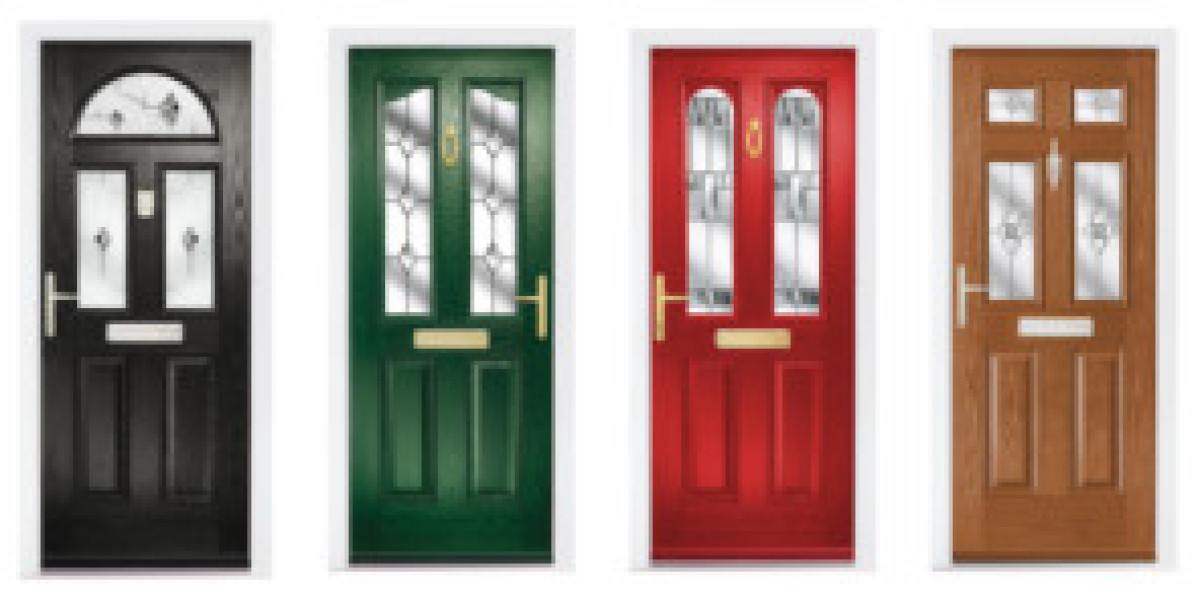The Purrfect Passage: Expert Tips for Cat Flap Installation
For cat owners, the desire to provide their feline buddies with liberty and independence while preserving the security and convenience of their home is a common goal. A cat flap, apparently a simple option, offers just that-- allowing your cat to come and go as they please without needing you to play doorman. However, a badly set up cat flap can cause draughts, security vulnerabilities, and annoyed felines. For that reason, understanding the subtleties of cat flap installation is crucial for both your cat's well-being and your peace of mind.
This short article works as a comprehensive guide to cat flap installation, using expert tips and recommendations to guarantee a smooth and successful job. Whether you're a skilled DIY lover or a first-timer, this guide will equip you with the knowledge to develop the purrfect passage for your cherished cat.
Picking the Right Cat Flap: The First Step to Success
Before you even consider tools and design templates, it is essential to select the ideal cat flap for your requirements and your home. The marketplace uses a diverse series of choices, each with its own set of functions and benefits. Think about these elements when making your selection:
- Type of Cat Flap: Cat flaps are not a one-size-fits-all service. They are available in numerous types, each providing different levels of security and benefit:
- Standard Manual Cat Flaps: These are the easiest and most economical alternatives, enabling any cat (or Small Cat Flap Installation animal) to enter and leave. They are ideal for low-security environments.
- Magnetic Cat Flaps: These flaps react to a magnet attached to your cat's collar. They provide somewhat much better security by avoiding stray animals from going into.
- Infrared automatic cat flap installation Flaps: Similar to magnetic flaps, these utilize an infrared sensor that reads an unique collar tag. They are more safe and secure than magnetic flaps and less vulnerable to interference.
- Microchip Cat Flaps: The most sophisticated alternative, these flaps are activated by your cat's special microchip, ensuring just your pet flap installer can acquire entry. This uses the highest level of security and control, avoiding undesirable animals from entering your home.
- Material and Durability: Cat flaps are usually made from plastic or aluminium.
- Plastic flaps are usually more affordable and lighter however might be less durable and more prone to weathering.
- Aluminium flaps are more robust, weather-resistant, and protected, typically including a more powerful locking system.
- Size of Your Cat: Ensure the flap opening is big enough for your cat to travel through easily without struggling. Consider your cat's size and breed when selecting. Measure your cat from chest to ground and add a couple of inches for comfortable clearance.
- Installation Location: Where will you be installing the cat flap? Doors, walls, and windows each present different installation challenges and require particular types of cat flaps or extra accessories like tunnels for thicker walls.
- Budget: Cat flaps vary in price from basic manual models to state-of-the-art microchip versions. Set a budget and consider the long-term worth and security advantages when making your choice.
Preparation is Paramount: Setting Yourself Up for Success
Once you have actually chosen the perfect cat flap, proper preparation is key to a smooth installation. Hurrying into the process can result in errors and disappointment. Make the effort to plan and collect everything you require ahead of time:
Choosing the Right Location: Carefully consider the place for your cat flap.
- Security: Choose an area that is not easily accessible to intruders and preferably far from public view.
- Ease of access for Your Cat: Ensure the area is quickly available for your cat, both within and outside. Consider the height from the ground and any obstacles.
- Benefit for You: Select a place that is convenient for access and maintenance but doesn't interrupt the circulation of your home.
- Avoiding Utilities: Check for any surprise wires, pipelines, or structural components within the wall or door where you prepare to set up the flap.
Collecting the Necessary Tools and Materials: Having all the right tools at hand will make the installation process much simpler. Essential tools generally include:
- Cat flap package: This must include the cat flap itself, a design template, screws, and possibly a tunnel extension depending upon the model and cat-friendly housing installation type.
- Pencil and ruler/tape procedure: For marking and determining precisely.
- Drill: With suitable drill bits for pilot holes and possibly bigger bits for cutting if required by your selected approach.
- Jigsaw or Keyhole saw: For cutting the opening for the cat flap (depending on material and installation technique).
- Screwdriver: To secure the cat flap in location (frequently a Phillips head screwdriver).
- Shatterproof glass and gloves: For safety during cutting and drilling.
- Sealant (optional): To seal around the cat flap and avoid draughts and water ingress, especially for external doors and walls.
- Spirit level (optional): To make sure the cat flap is installed straight.
Determining and Marking: Accuracy is essential for an appropriate fit.

- Use the template supplied: Most cat flap packages feature a design template. Utilize this to properly mark the cutout location on your chosen area.
- Consider your cat's height: Position the template at a suitable height for your cat. The bottom of the flap ought to be low enough for comfy entry and exit however not too low that it permits rain or dirt to get in easily.
- Double-check measurements: Before you start cutting, verify all your measurements and markings to prevent errors.
Step-by-Step Installation in a Wooden Door (Example)
Installing a cat flap in a wooden door is a typical DIY job. Here's a general detailed guide:
- Mark the Cutout: Tape the design template supplied with your cat flap set onto the door at the desired area. Utilize a pencil to trace the outline of the design template onto the door.
- Drill Pilot Holes: Using a drill and a drill bit slightly larger than the width of your jigsaw blade (or keyhole saw), drill pilot holes at each corner of the significant outline and possibly a couple of along the straight edges to make beginning the jigsaw easier.
- Cut the Opening: Using a jigsaw or keyhole saw, carefully cut along the significant summary, connecting the pilot holes. Take your time and follow the line precisely. Ensure you use security glasses and gloves during this step.
- Test Fit and Sand (if required): Before fully placing the cat flap, test fit it in the opening. If it's too tight, gently sand down any rough edges of the cutout till the flap fits comfortably.
- Place and Secure the Cat Flap: Place the 2 halves of the cat flap (inner and external frame) into the opening from either side of the door. Align the screw holes.
- Screw Together: Using the screws supplied, tighten the 2 halves of the cat flap together. Do not overtighten, as this might harm the door or the cat flap.
- Seal (Optional): Apply sealant around the edges of the cat flap where it fulfills the door frame for added weatherproofing and insulation.
Installation Considerations for Different Materials
While wooden doors are relatively simple, setting up cat flaps into other products requires various techniques:
- Glass Doors and Windows: Installing a cat flap in glass requires specialized tools and know-how. It is highly recommended to employ a professional glazier to cut and set up a cat flap in glass. Trying this yourself can be harmful and dangers shattering the glass.
- UPVC Doors: UPVC doors frequently have enhanced panels or might consist of metal elements. Installation can be complicated and may require professional help. Carefully inspect the door's building before attempting DIY cat-friendly housing installation or seek advice from the door manufacturer's guidelines.
- Walls: Installing a cat flap in a wall requires producing a tunnel through the wall thickness. This generally includes purchasing a tunnel extension kit that matches the depth of your wall. The installation process is comparable to door installation however needs cautious preparation and possibly more extensive cutting and sealing.
Post-Installation Tips: Welcoming Your Cat to Freedom
Once the cat flap is installed, the task isn't quite completed. Here are some tips for assisting your cat change and making the most of your brand-new cat flap:
- Introduce the Cat Flap Gradually: Don't anticipate your cat to utilize the flap immediately. Start by propping the flap open and encouraging your cat to walk through it with treats and favorable support.
- Draw with Treats and Toys: Place treats or toys on either side of the flap to incentivize your cat to explore and utilize it.
- Patience is Key: Some cats adjust rapidly, while others may take some time. Be patient and prevent forcing your cat through the flap, which can create unfavorable associations.
- Look for Draughts and Security: After installation, check for any draughts or spaces around the cat flap. Guarantee it is safely fitted and operating properly.
- Routine Maintenance: Keep the cat flap clean and devoid of debris. Occasionally inspect the locking system and hinges to ensure they are functioning smoothly.
By following these tips and taking your time with the installation process, you can create a safe, practical, and welcoming cat flap for your feline buddy, enhancing their flexibility and enriching their life while preserving the convenience and security of your home.
Frequently Asked Questions (FAQs) about Cat Flap Installation
Q: Can I set up a cat flap in any door?
A: While cat flaps can be installed in a lot of types of doors, some need more specialized techniques or professional help. Wooden doors are the most convenient for DIY installation. Glass doors and UPVC doors might require professional installation.

Q: How high should I set up a cat flap?
A: The ideal height depends upon your cat's size, but generally, the bottom of the flap ought to be around 10-15 cm (4-6 inches) from the ground. This permits most felines to travel through comfortably without needing to crouch too low.
Q: What tools do I really require for cat flap installation?
A: Essential tools include a drill, jigsaw or keyhole saw, screwdriver, pencil, ruler/tape step, and safety glasses and gloves. A sealant gun and sealant are advised for external doors and walls.
Q: How long does it take to set up a cat flap?
A: For an easy installation in a wooden door, it can take anywhere from 1 to 3 hours, depending upon your DIY experience and the complexity of the door. Installation in other products or walls may take longer.
Q: What if I am not confident in my DIY skills?
A: If you are uneasy with DIY jobs, it is always best to work with a professional cat flap installer handyman or carpenter to install the cat flap for you. This makes sure a correct and safe and secure installation, especially for more complex installations like glass or UPVC doors and walls.
Q: How can I stop stray felines from utilizing my cat flap?
A: Microchip cat flaps are the most reliable way to prevent stray animals from entering your home as they only open for your cat's signed up microchip. Magnetic and infrared flaps provide some, but less reliable, security.
Q: Do cat flaps let in draughts?
A: Modern cat flaps are developed with draught-excluding features like brushes or magnetic closures. Nevertheless, proper installation and sealing are vital to reduce draughts.
Q: How do I train my cat to use a cat flap?
A: Patience and positive reinforcement are essential. Start by propping the flap open, utilizing treats and toys to entice your cat through. Slowly decrease the openness of the flap as your cat gets more comfy.
Q: Can I set up a cat flap in a wall?
A: Yes, cat flaps can be set up in walls. This normally needs a tunnel extension package to connect the inner and outer frames through the density of the wall. Wall setups may be more complicated and require mindful planning.
Q: What maintenance is required for a cat flap?
A: Regularly tidy the flap and surrounding area to get rid of dirt and particles. Examine the hinges and locking mechanism occasionally and tighten up screws if necessary. Lubricate hinges with silicone spray if they end up being stiff.



